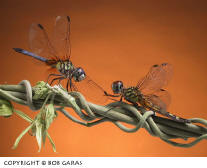
Those of us at Apogee Photo Magazine are happily familiar with the work of Bob Garas. As a frequent entrant in both our monthly and by-monthly contests, he has treated us to his wonderful images for several years. They often evoke a smile and “How’d he do that?!” When we chose his image of two dragonflies as the “Bugs” contest winner, we thought it was time to find out who Bob is and exactly how he does do it.
Bob lives in the Orlando, Florida area. Once an avid nature photographer, he doesn’t have the chances to go out in the field he used to enjoy. His job requires him to start work at 3:00 am. When he isn’t sleeping, he spends the remainder of the daylight hours with his nine-year-old daughter. At last, his itch to photograph became too strong, and he had to figure out how to satisfy that need within the constraints of his schedule.
Bob decided to become a studio photographer. His subjects are critters from his backyard–including his daughter’s mouse. A spare bedroom became his studio and workspace. Using two White Lightning strobes–one with a softbox for the key light and the other covered with colored gels lighting a black background–he shoots all of his images with a Canon G-1 digital camera.
At first, Bob thought he would never go digital. A friend once told him, “You’ll never duplicate film.” But now as he shoots wild subjects over which he has virtually no control, he realizes, “You don’t want to duplicate film; you want to create something new that might be better than film.” Especially when photographing insects, the advantage of a digital camera with its immediate feedback is invaluable. One shot of a butterfly might involve a hundred exposures, because so much of success depends on kismet. “If I were using film, I wouldn’t know if I had a useable shot for several days. With the digital camera, I can keep shooting until I get a shot I like.”
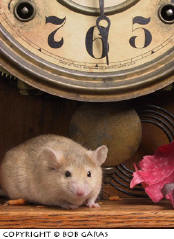 How does he do it? He generally seizes his subjects early in the evening, as they light for the night on his screened-in porch. “I find if I wait until night, they become slow and docile.” He has his set ready when he brings in his latest catch. The lights are ready, and he may have a prop such as a flower or vine in place. He sets his camera up to focus roughly in the 8 cm range. And then the fun begins. “ I’m constantly chasing (my subjects) around the room and putting them back.” He shoots a frame or two before the whole process starts again. Sometimes a flower with an added drop of nectar will entice his models to stay put a little longer.
How does he do it? He generally seizes his subjects early in the evening, as they light for the night on his screened-in porch. “I find if I wait until night, they become slow and docile.” He has his set ready when he brings in his latest catch. The lights are ready, and he may have a prop such as a flower or vine in place. He sets his camera up to focus roughly in the 8 cm range. And then the fun begins. “ I’m constantly chasing (my subjects) around the room and putting them back.” He shoots a frame or two before the whole process starts again. Sometimes a flower with an added drop of nectar will entice his models to stay put a little longer.
He recently discovered that often two of a kind, namely two insects of the same species, will interact on his “set,” giving him time to shoot a few more images than usual before they fly off. This was the technique he used to shoot the winning image of the two dragonflies. “I caught them with a butterfly net and waited until night.” He put them together on a pre-prepared vine and was surprised to see them interact.
He usually shoots after everyone in the household has gone to bed. But often, when managing the “talent” becomes too difficult, he uses his daughter as the bug or mouse wrangler. “When I shoot her mouse, I just put him in the picture with a cookie jar or something similar and let him roam. I’ve gotten some great shots that way.”
After his win in the “Bugs” contest, several readers wrote in wanting to know the answer to the biggest question: Did Bob digitally manipulate the image? “Oh, no. It was straight off of the camera. There was no digital post-work at all on the dragonfly image. I sometimes do a little Photoshop touching up to remove a mouse dropping or something like that, but generally, no. They’re straight from the camera.”
He has been criticized for his work. “A woman recently told me that I was not a nature photographer. I’m not saying that I am a nature photographer. I’m a studio photographer. My subjects just happen to be insects or small animals.”
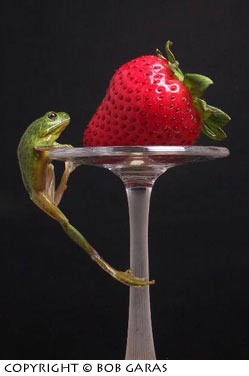
Strive
I use a basic light setup: one strobe with a softbox. I caught him just before he got to the top. Once there, I couldn’t get him to go anywhere else.
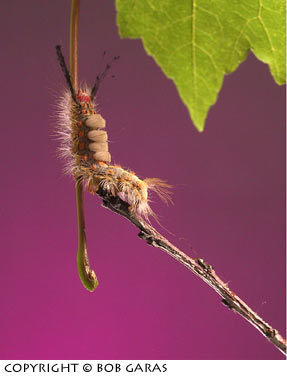
Caterpillar
I lit this the same way, but added a strobe with a colored gel to light the background.
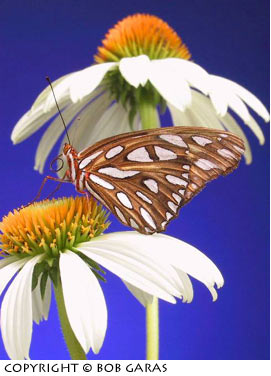
Daisy and Butterfly
I find the best time to photograph butterflies is at night when they move a lot slower.
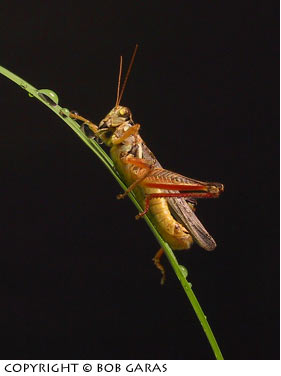
Grasshopper
I didn’t get many pictures of this guy. He was to hard to keep up with, but did manage to get this shot.
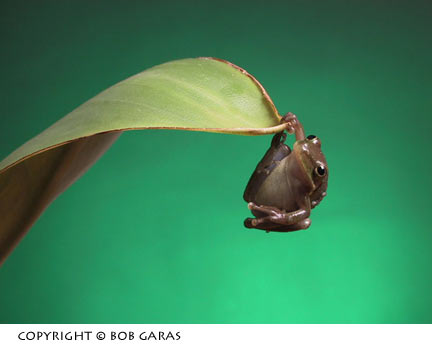
Frog and Leaf
Frogs are my favorite little animals to photograph. They amuse me as they stick to everything. I spend more time trying to chase them around the room than shooting.
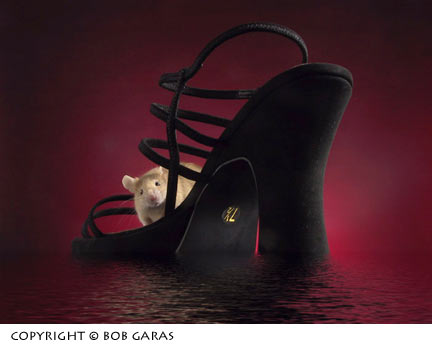
Mouse and Shoe
This is my daughter’s little pet. I used the same basic light setup, then used a flood filter in Photoshop to add the water-like effect.
by Michael Fulks


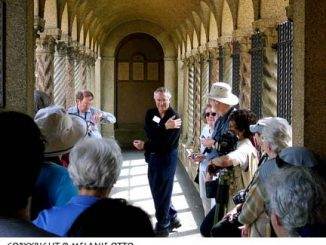
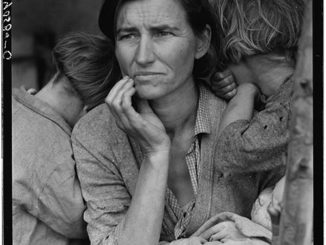
Leave a Reply